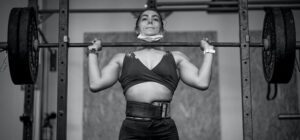Fitness involves more than just going to the gym and lifting weights. It requires an approach to training that aligns with your fitness goals and fits in with your lifestyle.
Workout splits are amazing workouts to get the most out of your training sessions. Thry work as the building blocks of your training routine, determining which muscle groups you focus on, how often you work out, and the results you can achieve.
In this article I will talk you through workout splits, exploring various strategies and approaches to help you optimize your training regimen. So, let’s dive in and uncover the secrets to effective training and achieving your fitness goals.
What is a Workout Split?
A workout split, often referred to as a training split, is an organized plan that splits your workouts into different muscle groups or body parts on specific days of the week.
Workout splits are used to allow you to focus on and effectively train different muscle groups, or fitness goals during each workout session. They are a common approach used in resistance training and bodybuilding to maximize muscle growth and overall fitness.
What are the Best Workout Splits?
It is impossible to pick out a single split workout as being the best workout, as they are all have different advantages depending on your training goals and various aspects that I will go through later in the article.
My top 5 workout splits are…
1. Full Body Split

Full-body splits are an excellent split routine for beginners, as you use nearly every muscle in every workout, either primary or secondary as they consist of compound exercises,
This allows for maximum recovery between training sessions, whilst at the same time emphasizing a high frequency of muscle stimulation, which is good for hypertrophy and strength, especially for beginners.
There are different types of full body split depending on how many times a week you want to train, which can be influenced by your training experience, goals and availability.
2-day full body split
I would recommend the 2-day full body split for beginners as it enables more time between workouts, which means your muscles have more time to recover.
A 2-day full body split will have the following schedule:
| Day | Workout |
|---|---|
| Monday | Full Body Workout |
| Tuesday | Rest and Recovery |
| Wednesday | Rest and Recovery |
| Thursday | Full Body Workout |
| Friday | Rest and Recovery |
| Saturday | Rest and Recovery |
| Sunday | Rest and Recovery |
As you can see above you have plenty of time for your muscles to recover between workouts, and it is also a convenient split and you only have to work out twice a week. However, if you do want to go gym or exercise on your rest days, you can include light cardio or abdominal workouts.
Once you have been training for a while and feel like your muscles are recovering faster and you are getting less DOMS (delayed onset muscle soreness), you should move on to a 3-day split, maximizing muscle growth.
3-day full body split
The 3-day full body split is in my opinion the best workout split to gain strength and muscle mass, as you are working every muscle group 3 days a week whilst at the same time having enough recovery time between workout, maximizing muscle growth.
A 3-day full body split will have the following schedule:
| Day | Workout |
|---|---|
| Monday | Full Body Workout |
| Tuesday | Rest and Recovery |
| Wednesday | Full Body Workout |
| Thursday | Rest and Recovery |
| Friday | Full Body Workout |
| Saturday | Rest and Recovery |
| Sunday | Rest and Recovery |
Both the 2 day and 3 day full body splits are also good for fat loss, as you will be doing mostly compound exercises, which burn the most calories and boost metabolism. Therefore, you can use full-body split workouts whether your goal is muscle gain, weight loss, or a combination of both.

The push-pull-legs split is personally my go to split that I use the most, as it can be used to either pack on some muscle mass and gain strength, or lose weight and cut up, depending on my current goals.
Push day use all the muscles used when pushing the weight, which are your chest, shoulders and triceps.
Pull days use all the muscles used when pulling the weight, which are your back, traps and biceps, which allows muscles used on push days to rest and recover.
Leg days refer to all your leg muscles, which are your quads, hamstrings, glutes and calves, giving your complete upper body a rest.
Depending on your experience and availability, there are 2 different PPL workout plans, you can choose between two PPL workout plans.
| Day | Workout |
|---|---|
| Monday | Push |
| Tuesday | Rest and Recovery |
| Wednesday | Pull |
| Thursday | Rest and Recovery |
| Friday | Legs |
| Saturday | Rest and Recovery |
| Sunday | Rest and Recovery |
The 3-day PPL split is good if you can only make it to the gym 3 times a week as you are still workout every muscle group and can work each muscle to maximum volume. It is also good if you are trying to lose weight as you are working every muscle group, plus you can add cardio and abs on your rest days.
| Day | Workout |
|---|---|
| Monday | Push |
| Tuesday | Pull |
| Wednesday | Legs |
| Thursday | Push |
| Friday | Pull |
| Saturday | Legs |
| Sunday | Rest and Recovery |
The 6-day PPL workout split is my favourite split and is great for if you want to back on some serious size and strength as you are working every muscle group twice whilst at the same time allowing recovery time between working each muscle group.
If you goal is weight loss the 6-day PPL split is also a great split, as you are pushing each muscle group to its limits limits performing multiple repetitions, 6 workouts a week, burning a lot more calories than if you just went for a run.
3. Upper-Lower Split
The upper-lower split is as simple as it sounds, the first workout you train your whole upper body and next workout you train you entire lower body, which means you can focus better on individual muscle groups, as they are not fatigued from previous workouts.
The most common way people use upper-lower split, is to do 2 upper body workouts and 2 lower body workouts per week, spreading their training volume across 4 workouts. However, you can use the upper-lower split in a variety of split routines.
4-day upper-lower split
The 4-day upper-lower split is a common split used in bodybuilding, as it gives you a consistent schedule from week to week, allowing you to train each muscle group twice per week, and at the same time, not overworking your muscles.
A 4-day upper-lower split will have the following schedule:
| Day | Workout |
|---|---|
| Monday | Upper Body |
| Tuesday | Lower Body |
| Wednesday | Rest and Recovery |
| Thursday | Upper Body |
| Friday | Lower Body |
| Saturday | Rest and Recovery |
| Sunday | Rest and Recovery |
The 4-day upper-lower split is also a good split because it is adaptable, for example, you can change your rest days to suit your availability, and you will still be giving your muscle groups enough time to recover between workouts.
2-day upper-lower split
The 2-day upper-lower split is a great split workout for beginners, as you can do an upper workout on Monday and a lower workout on Thursday, which is enough to cause growth, but it not enough to over train your muscles.
A 2-day upper-lower split will have the following schedule:
| Day | Workout |
|---|---|
| Monday | Upper Body |
| Tuesday | Rest and Recovery |
| Wednesday | Rest and Recovery |
| Thursday | Lower Body |
| Friday | Rest and Recovery |
| Saturday | Rest and Recovery |
| Sunday | Rest and Recovery |
The 2 day upper-lower split is also great if you have much time to workout as you are still training each muscle group, every week. It is also a very adaptable split, as you can change your rest days to suit you, which is convenient for people with busy schedules.
4. Body Part (BRO) Split

The body part split is a very popular split routine used in bodybuilding. The BRO split only focuses on a single major muscle group per workout, which allows for maximum volume for each workout, as you are guaranteed to work each muscle group to its maximum potential.
The body part split is aimed more towards advanced bodybuilders, so they can focus their entire workout on just 1 muscle group.
Due to having larger muscles, they have to work their muscles harder in order for them to grow, which means they need longer recovery time. That makes this workout perfect for them, as they have a full week to recover between training each body part.
A BRO split workout will have the following schedule:
| Day | Workout |
|---|---|
| Monday | Back |
| Tuesday | Legs |
| Wednesday | Chest |
| Thursday | Shoulders |
| Friday | Arms |
| Saturday | Rest and Recovery |
| Sunday | Rest and Recovery |
This is the most common body part split as it provides weekends off, but it you still want to exercise at weekend, you can do light cardio and abs.
5. Power-Hypertrophy-Upper-Lower (PHUL) Split
The PHUL split is another great split for building strength and muscle mass, as it uses a combination of power and hypertrophy workouts, meaning you see strength increases, whilst also building size as well.
A PHUL split workout will look like this…
| Day | Workout |
|---|---|
| Monday | Upper Power |
| Tuesday | Lower Power |
| Wednesday | Rest and Recovery |
| Thursday | Upper Power |
| Friday | Lower Power |
| Saturday | Rest and Recovery |
| Sunday | Rest and Recovery |
The PHUL workout split is a perfect balance of barbell, dumbbell, and cable machine work. It breaks your muscles down in every way possible, forcing your body to adapt and grow. This process is critical for muscle growth and is known as muscle protein synthesis.
Choosing the Best Workout Split
Choosing the best workout split depends on your fitness goals, schedule, and preferences.
Here are some things to consider before you decide:
What are your training goals?
Are you looking to build muscle, lose weight, improve endurance, or something else? Your goals will influence your split.
What is your training schedule?
Think about how many days per week you can realistically dedicate to working out, and pick a split to suit your availability.
How experienced are you?
Beginners may benefit from full-body workouts to build a foundation, while more advanced individuals can use more specialized splits.
Benefits of Split workouts
Split workouts offer several benefits:
- They allow you to focus on specific muscle groups during each session, which can lead to better muscle development and definition.
- By working different muscle groups on different days, you provide each group with a lot of time to recover before the next workout, reducing the risk of over training.
- You can often perform more exercises and higher intensity workouts for a particular muscle group in a split routine, as opposed to a full-body workout.
- Split routines can help keep your workouts interesting and prevent boredom, as you can change the focus of each session.
- If you have specific goals, like building a strong upper body or improving your lower body strength, you can prioritize those areas in your split routine.
- Depending on your schedule, split workouts can be time-efficient, allowing you to focus on a smaller set of exercises in each session.
- Varying exercises and muscle groups can help prevent plateaus and continue making progress.
Remember that the effectiveness of split workouts depends on your individual goals and preferences. It’s essential to choose a split that aligns with your objectives and suits your schedule and recovery capabilities.
Conclusion: Using Workout Splits to Maximize Results
In conclusion, the choice of a workout split should align with your fitness objectives, schedule, and personal preferences. Whether you’re aiming to build muscle, shed weight, enhance endurance, or achieve a combination of these goals, there’s a workout split tailored to meet your needs.
The article explored five popular workouts splits:
Each split offers unique benefits, allowing you to target specific muscle groups, prevent over training, and maintain workout variety. Your experience level, availability, and fitness goals play a crucial role in determining the most suitable split for you.
No matter which workout split you decide to try out, it is essential to combine it with a healthy diet that matches your training goals to maximize the benefits of your training plan.
There are also many supplements that can help you to achieve your training goals, whether you goal is to lose weight, or to gain lean muscle.
I have done a lot of research and tested out a lot of supplements and written the following articles to assist you in achieving your goals.
- Top supplements for building lean muscle.
- Benefits and side effects of creatine monyohydrate
- Top 5 fat burning supplements to boost your weight loss journey
- The ultimate guide to choosing the best protein powders for weight loss
- How to choose the best supplement for weight loss
I hope you found the information in this article useful and get to try these workouts out for yourself. If you have any questions about training splits or about bodybuilding in general, leave a comment below. I will reply as soon as possible.
